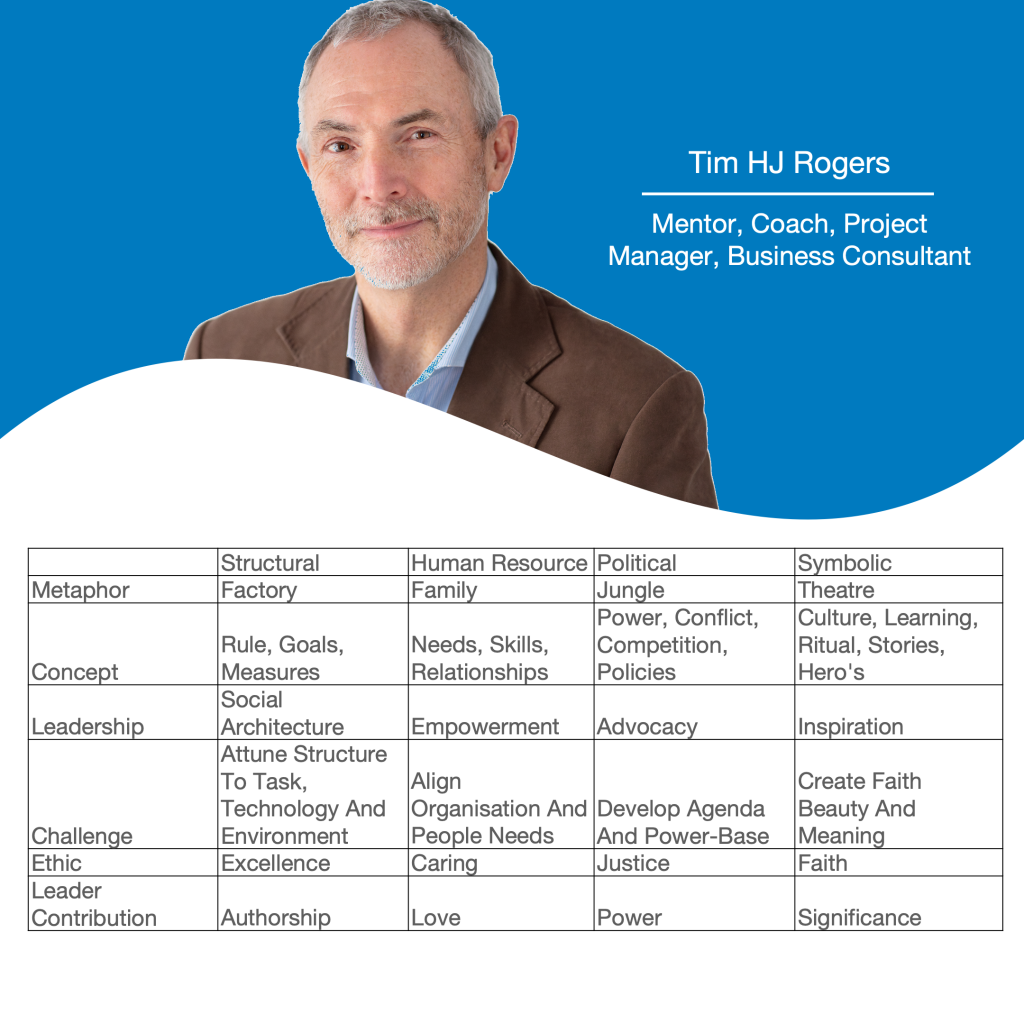
The Four-Frame Model by Bolman and Deal: A Comprehensive Approach to Organizational Change
The Four-Frame Model by Bolman and Deal provides a multifaceted approach to understanding and managing organizational change. By examining change through four distinct lenses—Structural, Human Resource, Political, and Symbolic—leaders can develop a more holistic and effective strategy for implementing change. Each frame offers unique insights and tools that can be used to diagnose issues and develop comprehensive solutions.
Structural Frame
The Structural Frame focuses on the architecture of the organization, including its roles, responsibilities, processes, and policies. This frame emphasizes the importance of creating clear, well-defined structures that align with the organization’s goals and strategies. By analyzing the organizational structure, leaders can identify inefficiencies, streamline processes, and ensure that resources are allocated effectively. This frame is particularly useful for addressing issues related to organizational design, workflow, and coordination.
Human Resource Frame
The Human Resource Frame emphasizes the needs, skills, and relationships of the people within the organization. This frame recognizes that employees are the organization’s most valuable asset and that their well-being, motivation, and development are critical to organizational success. Leaders using this frame focus on fostering a supportive and inclusive work environment, providing opportunities for professional growth, and ensuring that employees feel valued and engaged. This approach helps to address issues related to employee satisfaction, performance, and retention.
Political Frame
The Political Frame examines power dynamics, conflicts, and coalitions among stakeholders within the organization. This frame acknowledges that organizations are composed of individuals and groups with differing interests, goals, and levels of power. Leaders using this frame work to understand and navigate these dynamics, build alliances, and manage conflicts effectively. By doing so, they can create a more collaborative and cooperative environment, ensuring that diverse perspectives are considered and that resources are allocated fairly. This frame is particularly useful for addressing issues related to governance, decision-making, and stakeholder management.
Symbolic Frame
The Symbolic Frame considers the culture, symbols, and meanings within the organization. This frame recognizes that organizations are not just rational systems but are also rich with symbolism and culture that influence how people perceive and respond to change. Leaders using this frame focus on the importance of organizational culture, storytelling, rituals, and symbols in shaping the organizational climate and driving change. By aligning change initiatives with the organization’s core values and cultural narratives, leaders can foster a sense of purpose and meaning, making change efforts more compelling and effective.
Applying the Four-Frame Model
Using the Four-Frame Model, leaders can better diagnose issues and develop comprehensive strategies for change. For instance, when faced with a change initiative, leaders can start by analyzing the structural aspects to ensure that the organizational design supports the change. They can then consider the human resource implications, ensuring that employees are engaged and supported throughout the process. Next, they can navigate the political landscape, building coalitions and managing conflicts to gain buy-in and support. Finally, they can leverage the symbolic aspects, aligning the change with the organization’s culture and values to create a compelling vision for the future.
By integrating these four frames, leaders can develop a more nuanced and effective approach to change management. This holistic understanding ensures that all aspects of the organization are considered, leading to more sustainable and successful change initiatives. The Four-Frame Model by Bolman and Deal thus provides a powerful tool for leaders seeking to navigate the complexities of organizational change.
